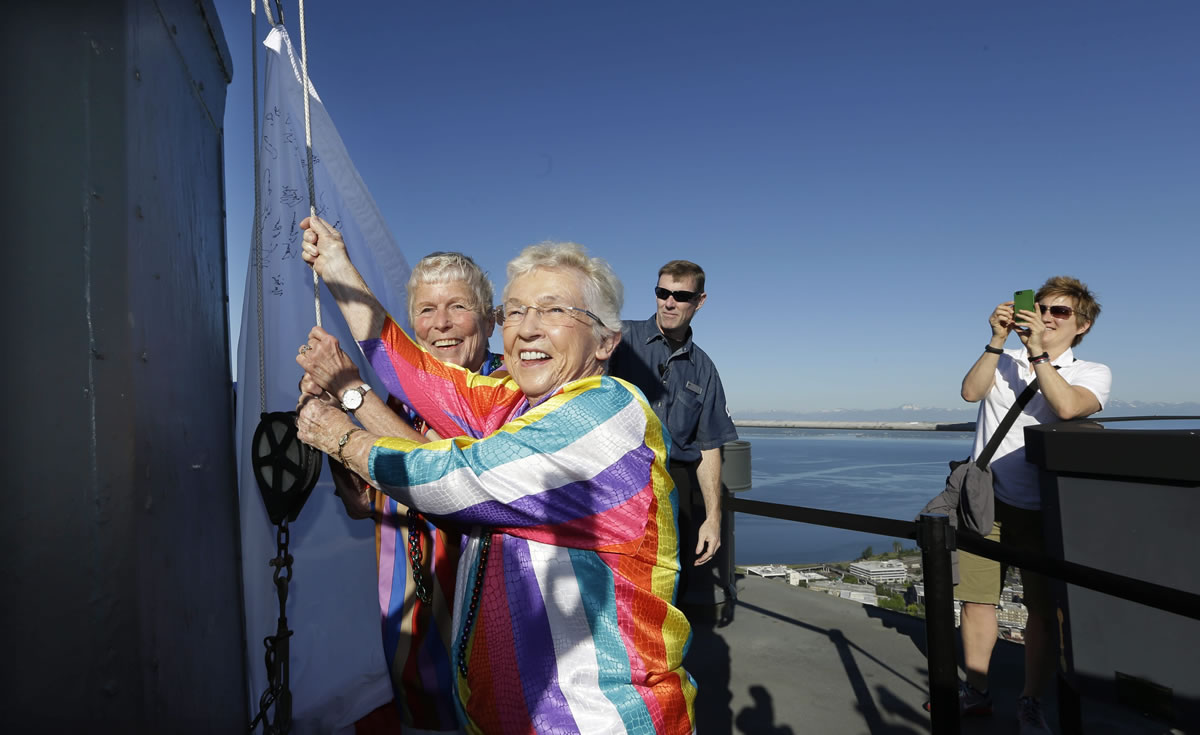Midnight hit. The ball dropped, bells clanged and fireworks boomed. And in Maryland, as the East Coast rolled into the new year, a handful of same-sex couples celebrated by getting married.
Months earlier, the state made history by being among the first to approve same-sex marriage in a popular vote. It was an unprecedented victory for the national marriage equality movement, and a life-changing moment for the Maryland couples who held the state’s first same-sex weddings on Jan. 1, 2013.
Not too long after their rings were exchanged, the dominoes began to fall. First, Rhode Island. Then Delaware. And, eventually, a Supreme Court decision with the potential to revolutionize the state of marriage in America.
It turns out Maryland’s New Year’s nuptials were a fitting start to what has turned out to be a remarkable year in LGBT history — perhaps the greatest year America’s LGBT community has experienced.
By the end of 2013, six additional states began issuing same-sex marriage licenses. Eight New Mexico counties, facing the absence of a state marriage law ruling one way or the other, decided to follow suit. So did Illinois, where a marriage equality bill passed in November will take effect in June.
But the undisputed linchpin of the marriage equality movement’s sudden momentum came this summer, when the Supreme Court struck down a key portion of the Defense of Marriage Act. Enacted in 1996 when no state had marriage equality laws on its books, DOMA forbade the U.S. government from recognizing same-sex marriages. By the time it was overturned, the law had tossed married gay couples into bizarro world, where they were married for some purposes but unwedded for others. With the court’s decision, the stakes of the marriage equality movement drastically changed. If state-level marriage laws made same-sex marriages a possibility, reversing DOMA put those marriages on an even playing field.
How marriage equality managed to achieve more milestones in one year than it had in the past three is still a little unclear. But at its heart is a major shift in attitudes toward LGBT individuals that stems in large part from visibility on all levels.
In one sense, that visibility came from more overt support for LGBT rights than ever before. That started in January, when President Barack Obama made LGBT equality a key component of his second inaugural address. Several congressmen followed his lead, including notably the 10 Senate Republicans who broke party rank to support passage of the Employment Non-Discrimination Act.
(Let’s not give politicians too much credit. Support for LGBT equality also blew up on a grassroots level. As evidence, take the 3 million people who changed their Facebook profile pictures to support marriage equality. Regardless of whether the campaign had an effect, that’s an astonishing number.)
Is the picture entirely rosy? No. While a majority of Americans now support same-sex marriage, it’s still a small majority, ranging from 51 percent to 54 percent. Even though Pew Research found 59 percent of marriage equality opponents think they’re fighting a losing battle, outspoken opposition still continues. And transgender rights still have a long way to go, especially when it comes to fighting “bathroom panic.”
Still, in 2013, the nation’s first openly gay candidate was elected to the U.S. Senate. California chose the nation’s first transgender homecoming queen. And hundreds of thousands of same-sex couples were granted the right to say “I do.”
So was this year the greatest year in gay history? For now.



